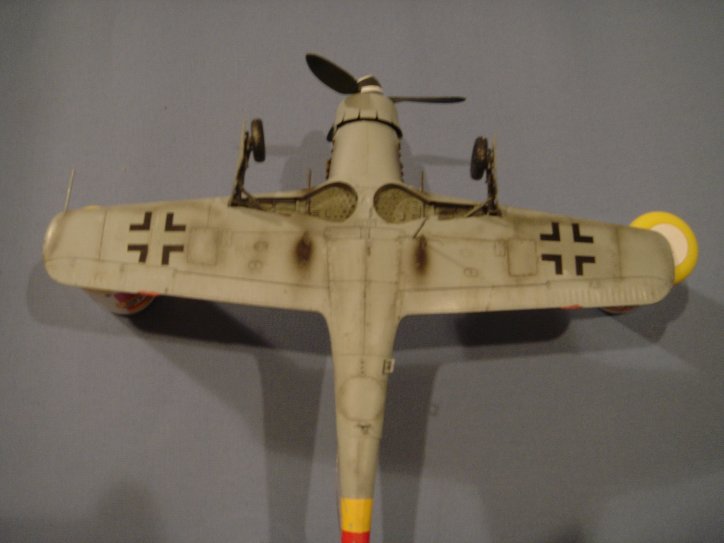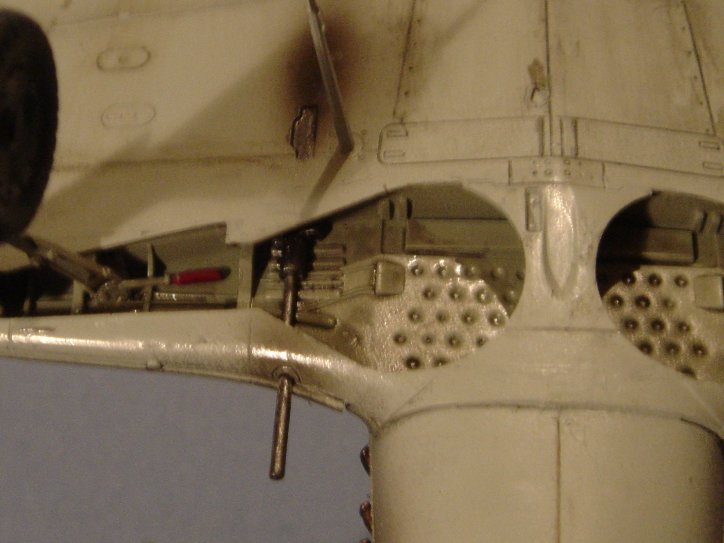Philip, don't kick yourself you have done very well, seriously all you need to do is to have a lot more patience. I know that is a difficult thing to ask of a 12 year old but it will help to improve your standards. Test fit everything, if it doesn't appear to fit properly find out why and try and fix the problem. It might be the parts need trimming or even the alignment pins can be the problem. There might be no fix and therefor filling after fixing might be the way to go. A good example of this is the starboard wing on the Tamiya Spitfire Mk 1. I added a small piece of sprue at the deepest cord position (cord is the wing front to rear, the airfoil section) to lift the end of the wing. This eliminated a slight step at the wing root joint and meant that no filler was required. The port wing didn't have this problem. Sometimes you can achieve a better wing to fuselage join if you brace out the fuselage to meet the wings. It is just a case of working out the fix. This is one reason why it is better to use liquid cement, you can hold parts together while running in the cement, by capillary action, making for a much neater join.
Quoted Text
I keep on telling myself that i could have done better, but then i think that this is my first 'proper' model that i have done.
You have a lot to learn but you're lucky in having the Internet so, if you stick with it your learning curve will flatten far quicker than mine did. Remember a badly assembled model will ruin a good paint job and well assembled model will be ruined by a bad paint job. There is no easy way out you just have to learn, but above all never loose sight of the fact that this is all about having fun. We'll have you taking top junior prize at Telford in a couple of years

Quoted Text
Also, when doing the invasion stripes on the typhoon, should i use the kit black decals, or paint all the stripes?
I think you will have a difficult time if you use the decals, read my account of how I did this in "Storm Warning" in the features section. I did it as an experiment and it is infinitely easier to mask and paint the stripes. I would paint the ID elements as well, the Sky band and the yellow leading edges.
When masking on compound curves, or any detail masking: 1. Use Tamiya tape (it is the best)
2. Lay a piece on a sheet of glass, or ceramic tile and, using a steel ruler and a sharp knife, cut a thin strip of tape.
3. Using the cut edge as the masking edge (the original edge may have fibres adhering to it) lay the tape in position. Eyeball down it's length to keep it straight as you go around the fuselage. Don't be satisfied with it if it ainít straight, or doesn't go where it's supposed to.
4. Once the 2 outer edges have been defined this way fill in with wider but much shorter pieces (try wider long pieces and you will see why you use thin pieces for the outside edges

)
5. Spray the next colour.
You will always find it easier to paint a colour the mask it out. If for any reason you have to mask then paint the colour you will find it difficult to subsequently mask this colour and paint up to it (you will either not mask to the edges, therefor narrowing the masked area. Or you will over mask and leave an unpainted part when the mask is removed) You can overcome this problem by laying the new masking down before removing the original, butting new to old. One of the skills required for successful airbrushing is the ability to mask well.
You are correct practice makes perfect. There is no easy route.
Quoted Text
So should i remove the wire?
The choice is, of course, yours. I think it is to far out of scale and is not taught so it detracts from what is otherwise a nice model. So, if it's easy to do, I would remove it. You can always add it later, when you have got your head around how to do it with fishing line or mending thread. An antenna wire will always add an air of authenticity but to look right it must be close to scale. On a FW 190 and other aircraft where the wire enters the canopy, there is the added complication of showing the wire on the inside. This is not such a problem if the canopy is shown open but if closed it is something to think about. (We'll see how I cope with this in my online build

Also be assured that probably all those show stopping models encounted a problem or two on the way. It's just that with practice you will find out how to overcome them. Happy Typhooning

Mal






















 )
)




 Your canopy looks pretty good from what I can see. Super glues and clear parts don't mix. If aat possible, use white glue or glues especially designed for attaching clear parts. Future and even Krystal Kleer work great. Keep on building. you're doing great.
Your canopy looks pretty good from what I can see. Super glues and clear parts don't mix. If aat possible, use white glue or glues especially designed for attaching clear parts. Future and even Krystal Kleer work great. Keep on building. you're doing great. 
 "Q"
"Q" 

